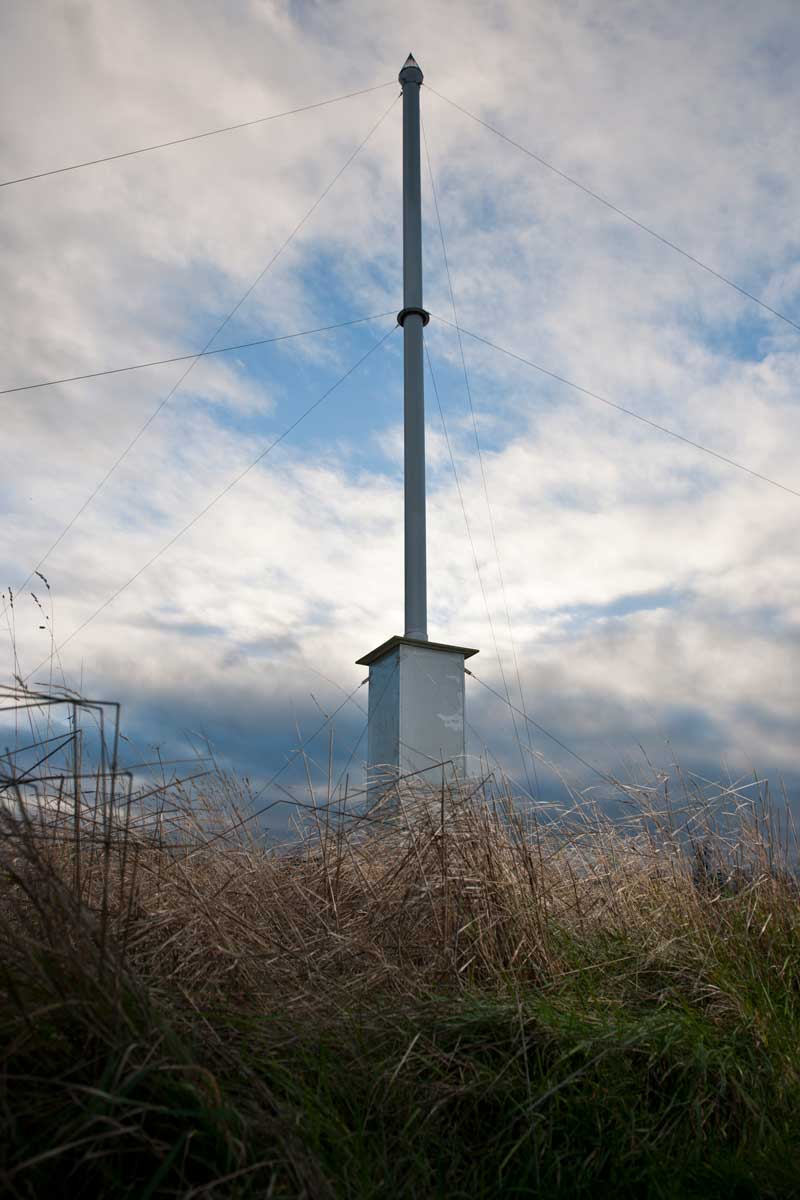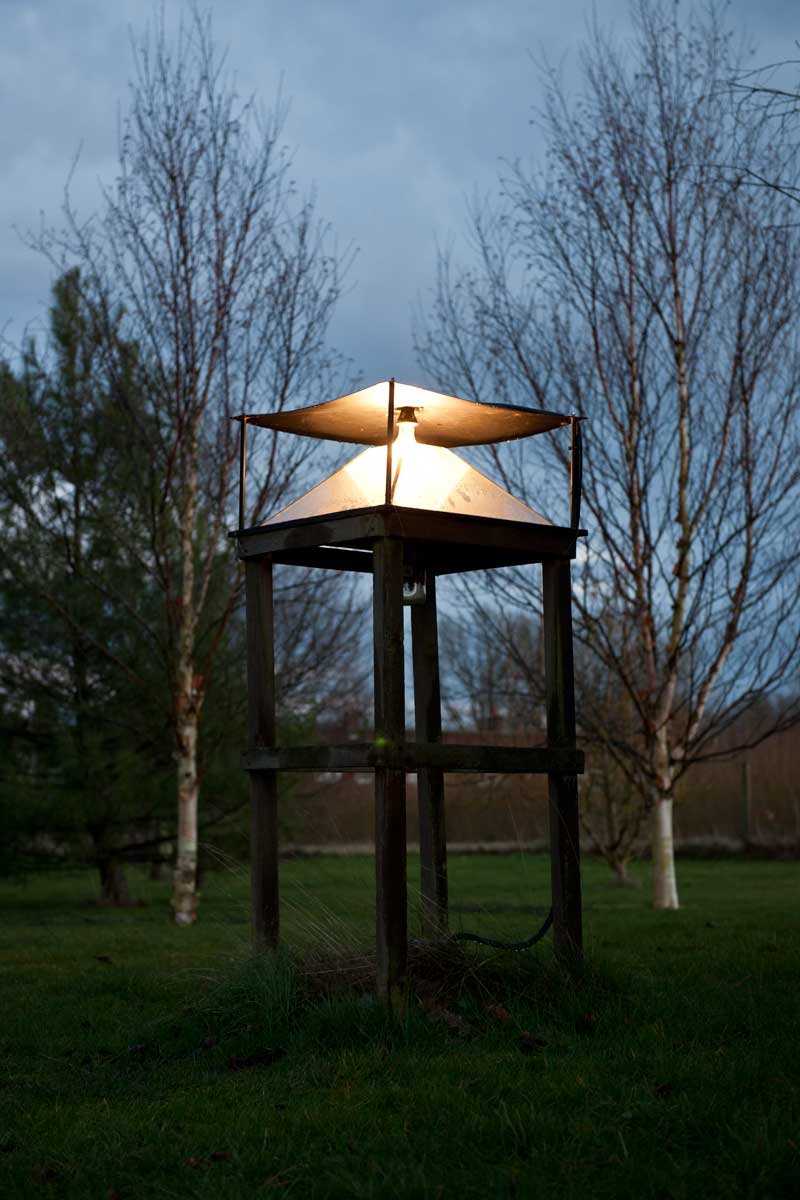Networks
The suction trap network

The traps
We operate 16 suction-traps in the UK, each 12.2 metres tall. The traps are emptied daily in spring, summer and autumn, weekly in winter. Aphids are identified at Rothamsted and SASA (Edinburgh), counted, and recorded on our long-term database.
Forecasts and pest control
We have found strong relationships between winter temperature and the time that aphids are first found in our traps, and their abundance. We use these relationships to forecast when movement into crops is likely to start, and to predict the impacts of climate change on pest problems. Compared to 50 years ago, many aphids are flying a month or more earlier.
Insecticide resistance
We test individual aphids, in particular the major pests Myzus persicae (Peach–potato aphid) and Sitobion avenae (English grain aphid), for their resistance to a range of insecticides. Molecular tools are used to detect the mutations conferring resistance.
Plant viruses
Aphids are important vectors of crop viruses. We detect the presence of certain viruses in aphids and hence their potential as vectors.
Informing pest control
We present all of this information in web and email bulletins which are issued every Friday and used by practitioners to guide aphid control programmes.
Not just aphids
We keep all samples. They are an invaluable resource for studies of, for example, the natural enemies of aphids such as ladybirds and lacewings, wasps, the mosquito vectors of West Nile Virus, and the midge vectors of Bluetongue virus of sheep and cattle.
Fundamental science
The data are used in many projects, often aimed at understanding the processes affecting insect population dynamics and community structure.
International dimension
There are suction-traps of the Rothamsted design throughout Europe and in other parts of the World. We host a database on which data from many of these countries are stored.
The Light Trap Network

The traps
We currently have 84 light-traps in a wide range of habitats. Each trap uses a 200 watt tungsten bulb. Most traps are emptied daily throughout the year. The moths are identified by volunteers and by a contractor, counted and recorded on our long-term database. Samples are not stored.
Moth abundance and distribution
We have shown that two-thirds of our common larger moth species have declined significantly over the past 50 years, especially in southern Britain. This is worrying as moths are good indicators of the health of the environment and are important components of the food chain. However, one third of species have become more abundant. The reasons for the changes are being investigated and will inform conservation strategy.
Not just moths
Other insects have been studied by volunteers on an ad hoc basis, resulting in numerous publications, several first records of insect species in the UK and at least one species new to science.
Wider applications
The data are used in a wide-range of projects, most of them aimed at understanding population dynamics and community structure in the face of environmental changes, and developing conservation strategies.
